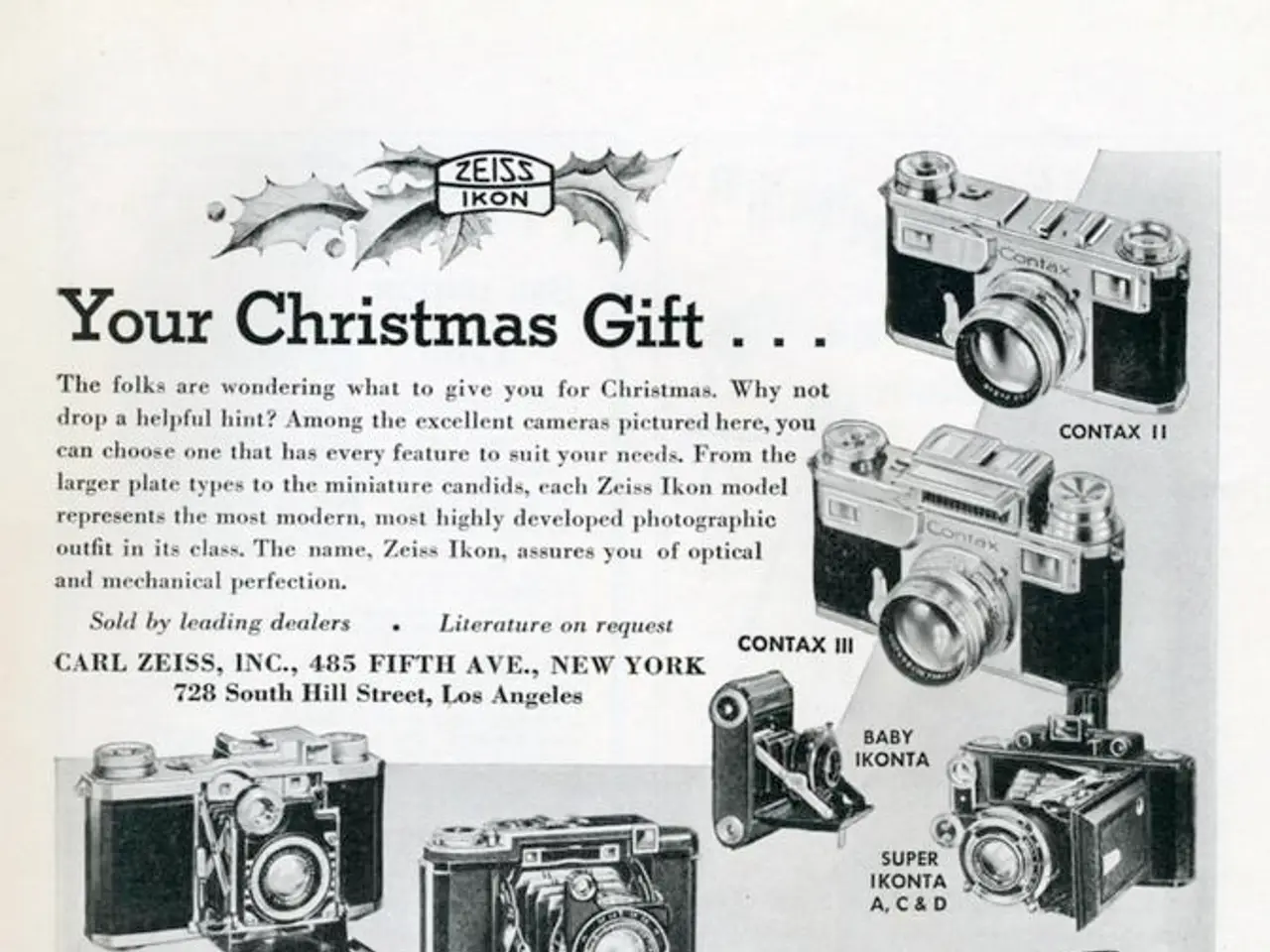Understanding Various Camera Lens Filters
In the realm of photography, filters play a significant role in capturing stunning images. Here's a breakdown of the various types of filters, their uses, and the materials they are made from.
Filters can be used to reduce reflections, protect lenses from potential damage, and enhance colors. One common type is the polarizing filter, which reduces reflections and enhances colors, making them particularly useful for landscape photography.
Another popular filter is the Graduated Neutral Density (GND) filter. These filters are rectangular in shape, catering to the varying sizes of the sky and foreground in a composition. Hard-edge GND filters are ideal for high-contrast situations where the horizon is flat, while soft-edge GND filters are more versatile, suitable for situations where the horizon isn't necessarily flat.
Reverse GND filters are a specialized tool for landscape photographers shooting against the sun while it is setting close to the horizon. They are dark at the horizon and gradually soften towards the top, making them perfect for sunset shots.
Color/Warming/Cooling filters are used to alter colors in a photo, but their use in digital photography has diminished due to the ease of color effects and white balance changes in post-processing software.
Close-Up filters, or diopters, allow a lens to focus closer on subjects. They are exclusively used for macro photography but can negatively impact image quality.
Special Effects filters create various visual effects, such as making bright objects look star-like, creating a "dreamy" look, or creating multiple copies of a subject. However, most effects can now be easily produced in Photoshop, making these filters less common.
One issue that can arise with wide-angle lenses is vignetting, a darkening of the corners of an image. A filter holder can add to this problem, but Lee's filter holder, used with a wide-angle adapter ring, can stack up to three filters at a time and minimizes vignetting.
It's worth noting that the materials used in filters vary. Glass filters are of the highest quality but are very expensive and easily break. Plastic and resin filters are cheaper and do not easily break, while polyester filters are thin and prone to scratches. Polycarbonate filters are tough and scratch-resistant.
While landscape photographers heavily rely on filters, street and portrait photographers rarely use them. This is because the primary focus of these genres is often on capturing candid moments and people, rather than manipulating the environment or colours.
In conclusion, filters are a valuable tool in a photographer's arsenal, offering a range of possibilities to enhance and manipulate images. Understanding the different types of filters and their uses can help photographers make informed decisions when choosing equipment for their next shoot.
Read also:
- Peptide YY (PYY): Exploring its Role in Appetite Suppression, Intestinal Health, and Cognitive Links
- Toddler Health: Rotavirus Signs, Origins, and Potential Complications
- Digestive issues and heart discomfort: Root causes and associated health conditions
- House Infernos: Deadly Hazards Surpassing the Flames








